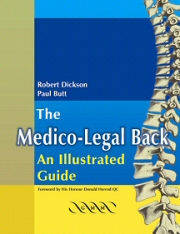5 - Spondylolisthesis
Published online by Cambridge University Press: 10 December 2009
Summary
This term is derived from the two Greek words spondyl meaning spine and olisthesis meaning slippage. It most commonly occurs at the bottom of the spine – the joint between the fifth lumbar vertebra and the sacrum (the L5/S1 joint). We classify spondylolisthesis into five different types.
Types of spondylolisthesis
Dysplastic
Isthmic
Traumatic
Degenerative
Pathological
By far the commonest is isthmic spondylolisthesis.
When spondylolisthesis occurs, the vertebra above, with the whole spine on top of it, slips forward on the one below. Having vertebrae slipping around sounds a dreadful situation but, with few exceptions, the condition is much more benign than one would think.
DYSPLASTIC SPONDYLOLISTHESIS
Dysplastic means abnormal formation and the dysplasia in question concerns the posterior facet joint at the back of the spine, which quite simply has not formed properly (embryological failure for whatever reason). You will recall from the earlier biomechanics section that the posterior facet joint aids stability and if it has not formed properly then it may be incompetent in its ability to prevent movement. While the dysplasia is congenital (present at or before birth), slippage may never occur and thus, the dysplasia or even aplasia (no facet joint formed at all) may never be recognised.
- Type
- Chapter
- Information
- The Medico-Legal Back: An Illustrated Guide , pp. 105 - 120Publisher: Cambridge University PressPrint publication year: 2003



